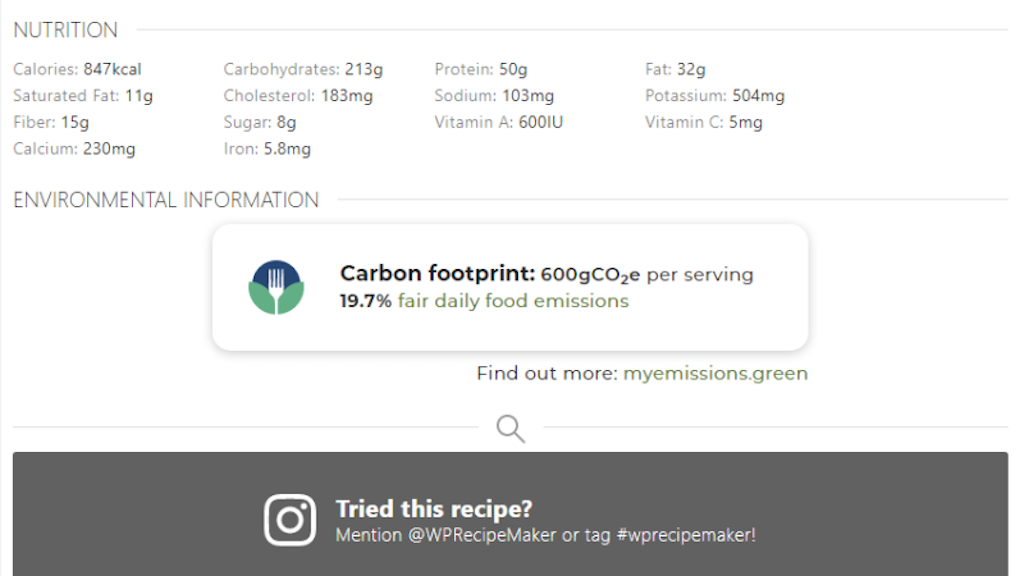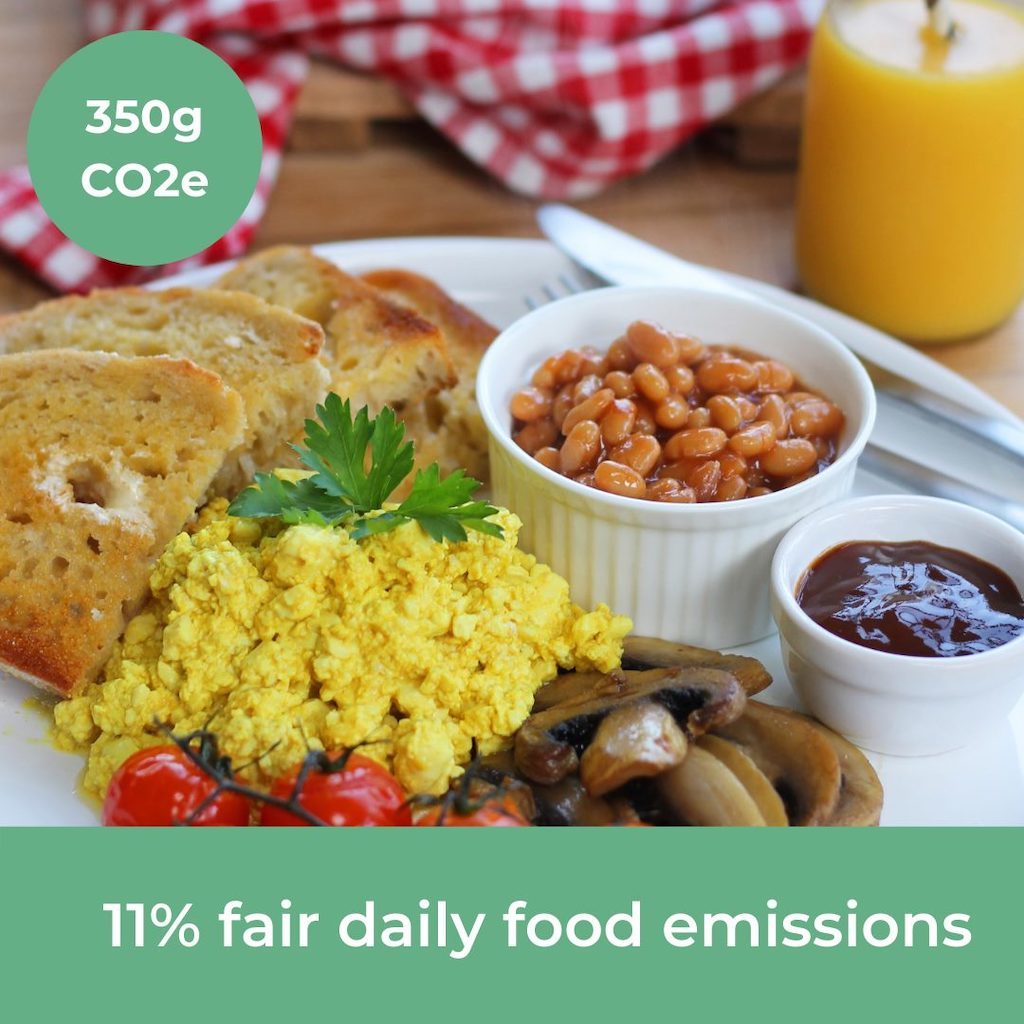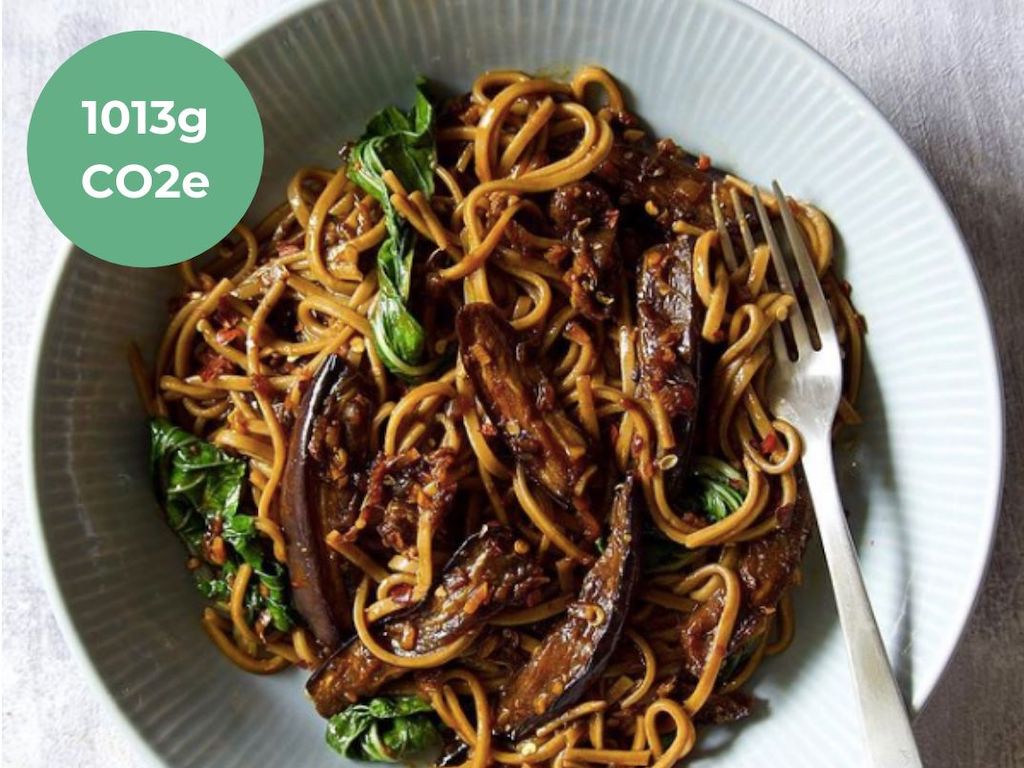4 Mins Read
A new online tool has been created so that food blogs and websites can add carbon labels to their recipes. Partnering with WP Recipe Maker, a recipe plug-in for web publishing software WordPress, My Emissions automatically calculates the carbon footprint of recipes using its ingredients, and can even make more specific estimates if the life cycle of a product or food is provided too.
My Emissions offers users an easy way to add carbon labels to their recipes, based on the ingredients provided. The label itself displays each dish’s carbon dioxide equivalents as a percentage of your daily food emissions to make it easy for readers to understand the impact of their consumption choices. Partnering with WP Recipe Maker, the most popular recipe card plugin for food blogs, users can now add carbon labels that are automatically calculated for them to all their recipes. Though the WordPress partnership affords users special pricing and automatic calculations as part of the integrations, the founders told Green Queen that their service is available for all recipe blogs and websites, making it a game changer.
This service will cost US$54 for an unlimited number of recipes, and will also include the ability for food bloggers to make their carbon footprint estimates more accurate, thanks to the vast food emissions database available on My Emissions. For instance, by specifying the life cycle of an ingredient, food, meal or product, would enable food blogs to have even more precise footprint measurements.

Just as with nutritional information, I hope that as more food blogs display environmental information people will start to learn about food emissions.
Matthew Isaacs, Co-Founder, My Emissions
The idea for a recipe carbon label tool came about when university friends Matthew Isaacs and Nathan Bottomley wanted to figure out ways to reduce their food footprint, but were unable to do so because of the lack of accessible data. After building a database from research and ‘life cycle assessment’ reports published in peer-reviewed journals around the world, Isaacs and Bottomley launched My Emissions in April last year.
Speaking about the launch of their automatic carbon label service on WP Recipe Maker, Isaacs said: “Just as with nutritional information, I hope that as more food blogs display environmental information people will start to learn about food emissions, and very quickly we will get used to seeing carbon labels next to all food and recipes.”
“People are increasingly aware of the impact they have on our planet but don’t know where to even start to calculate their impact,” added Brecht Vandersmissen, owner and developer of WP Recipe Maker. “My Emissions does the heavy lifting for you.”
As a part of Veganuary, the movement that encourages people to go vegan for 31 days, My Emissions has also been featuring plant-based recipes that have been carbon labelled.
Previous studies have shown the enormous impact that reducing meat and dairy consumption can have on slashing our food footprint and contributing to fighting climate change, given that animal agriculture alone makes up 18% of the global total emissions we produce annually, topping the combined greenhouse gases produced by all transportation combined, from cars to planes.

People are increasingly aware of the impact they have on our planet but don’t know where to even start to calculate their impact.
Brecht Vandersmissen, Owner & Developer, WP Recipe Maker
A G20 food footprint report published last year by Oslo-based nonprofit EAT found that if the world’s largest economies minimised consumption of meat and dairy products, effectively switching to a flexitarian diet, as much as 40% of the total global carbon budget for food could be freed up.
Another study found that even if fossil fuels were to be eliminated immediately, the Paris agreement goals would still be out of reach without a drastic reduction in high-emissions meat and dairy-heavy diets.
While still a novel concept, carbon footprint labels are slowly but steadily being adopted by brands and companies to provide consumers with information about the sustainability of a product. Just Salad, for instance, has carbon labelled its entire menu, while Upfield, the maker of plant-based spreads like Flora and Becel, will be adding on-pack carbon footprint information to 100 million products by the end of this year.
Lead image courtesy of My Emissions / Root Kitchen.




